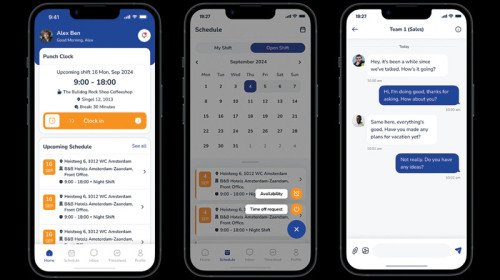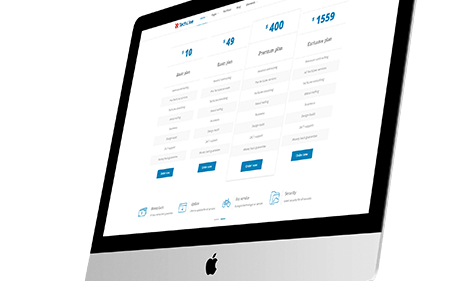Employee shift planning application why effective?
- blog-detail
- Home
Employee shift planning application why effective?
- 20 Sep, 2024
In today?s fast-paced business environment, managing employee schedules can be a daunting task, especially for small businesses. Ensuring that shifts are covered, avoiding scheduling conflicts, and balancing employee availability are just a few of the challenges. Fortunately, employee scheduling apps have emerged as an efficient solution. These apps simplify shift planning, reduce administrative work, and enhance productivity, providing small businesses with the tools they need to manage their workforce more effectively.
Why Shift Scheduling is Crucial for Small Businesses
Small businesses often operate with limited staff, which makes efficient scheduling vital. Poor shift planning can lead to problems such as:
Overstaffing or understaffing: Both situations result in operational inefficiencies. Overstaffing increases labor costs, while understaffing can lead to a poor customer experience due to long wait times or reduced service quality.
Scheduling conflicts: Employees may inadvertently be double-booked for the same shift or scheduled outside of their availability, which can cause last-minute absences or dissatisfaction.
Employee dissatisfaction: Unpredictable schedules, frequent last-minute changes, or lack of flexibility can lead to low employee morale, increased turnover, and decreased productivity.
With the use of employee scheduling apps, small businesses can address these challenges, ensuring smoother operations and happier employees.
Key Features of Employee Scheduling Apps
Automated Scheduling: Modern apps offer automated shift scheduling features, which analyze staff availability, labor laws, and business needs to generate optimal schedules. This eliminates guesswork and manual errors.
Real-time Notifications: Employees can receive instant notifications about their shifts, any changes, or upcoming time-offs. This eliminates confusion and ensures that everyone is on the same page.
Employee Self-Service: Many scheduling apps provide employees with the flexibility to view their schedules, swap shifts, or request time off directly through the app. This reduces the back-and-forth between managers and employees, saving valuable time.
Integration with Payroll: Some apps integrate with payroll systems, ensuring that employees are paid accurately for the hours they work. This integration reduces manual payroll errors and makes compliance with labor laws easier.
Mobile Accessibility: Many scheduling apps are mobile-friendly, allowing both managers and employees to access schedules on the go. This is particularly helpful for businesses with shift-based operations, such as retail, restaurants, and healthcare.
Benefits of Employee Scheduling Apps for Small Businesses
1. Time Savings
For small business owners or managers, time is a precious resource. By automating the scheduling process, these apps save hours of administrative work every week. Instead of spending time creating and revising schedules manually, business owners can focus on other critical aspects, such as improving services or expanding the business.
2. Cost Efficiency
Employee scheduling apps can help prevent costly scheduling mistakes. By ensuring optimal staffing levels and minimizing overtime, these apps reduce unnecessary labor costs. Moreover, many apps come with tiered pricing, allowing small businesses to select a package that fits their budget.
3. Improved Employee Satisfaction
Giving employees more control over their schedules can improve their overall satisfaction. Features like self-service shift swaps, instant schedule updates, and the ability to request time off make the work-life balance easier for employees. Happier employees are likely to be more engaged and productive, reducing turnover and boosting workplace morale.
4. Better Communication
Miscommunication regarding schedules can lead to missed shifts and reduced productivity. Employee scheduling apps streamline communication, ensuring that employees are always updated on their shifts. This reduces the likelihood of no-shows and last-minute changes, contributing to smoother operations.
5. Compliance with Labor Laws
Many small businesses struggle to stay compliant with local labor regulations, such as overtime laws, break requirements, or minimum wage rules. Some scheduling apps are equipped with compliance features that flag potential violations, helping business owners avoid costly legal issues.
Top Employee Scheduling Apps for Small Businesses
There are many employee scheduling apps on the market, but some stand out for their features and affordability. Popular options include:
When I Work: A robust app with employee self-service options and integration with payroll systems.
Deputy: Offers powerful scheduling automation and workforce management tools.
Homebase: Known for its easy-to-use interface and free plan for small businesses with basic scheduling needs.
Shiftboard: Provides more advanced features, such as demand-based scheduling and detailed analytics.
Conclusion: Simplify Your Shift Planning
For small business owners, employee scheduling apps are a game-changer. These tools not only save time and reduce administrative workload but also improve employee satisfaction and ensure smoother operations. Whether you're managing a retail store, restaurant, or healthcare practice, a well-designed scheduling app can help you manage shifts efficiently, optimize staffing, and keep your business running smoothly.
By adopting the right employee scheduling software, you can make scheduling less stressful, allowing you to focus on what matters most?growing your business.
Related searches
Newsletter - Get Updates & Latest News
Get in your inbox the latest News and Offers from





